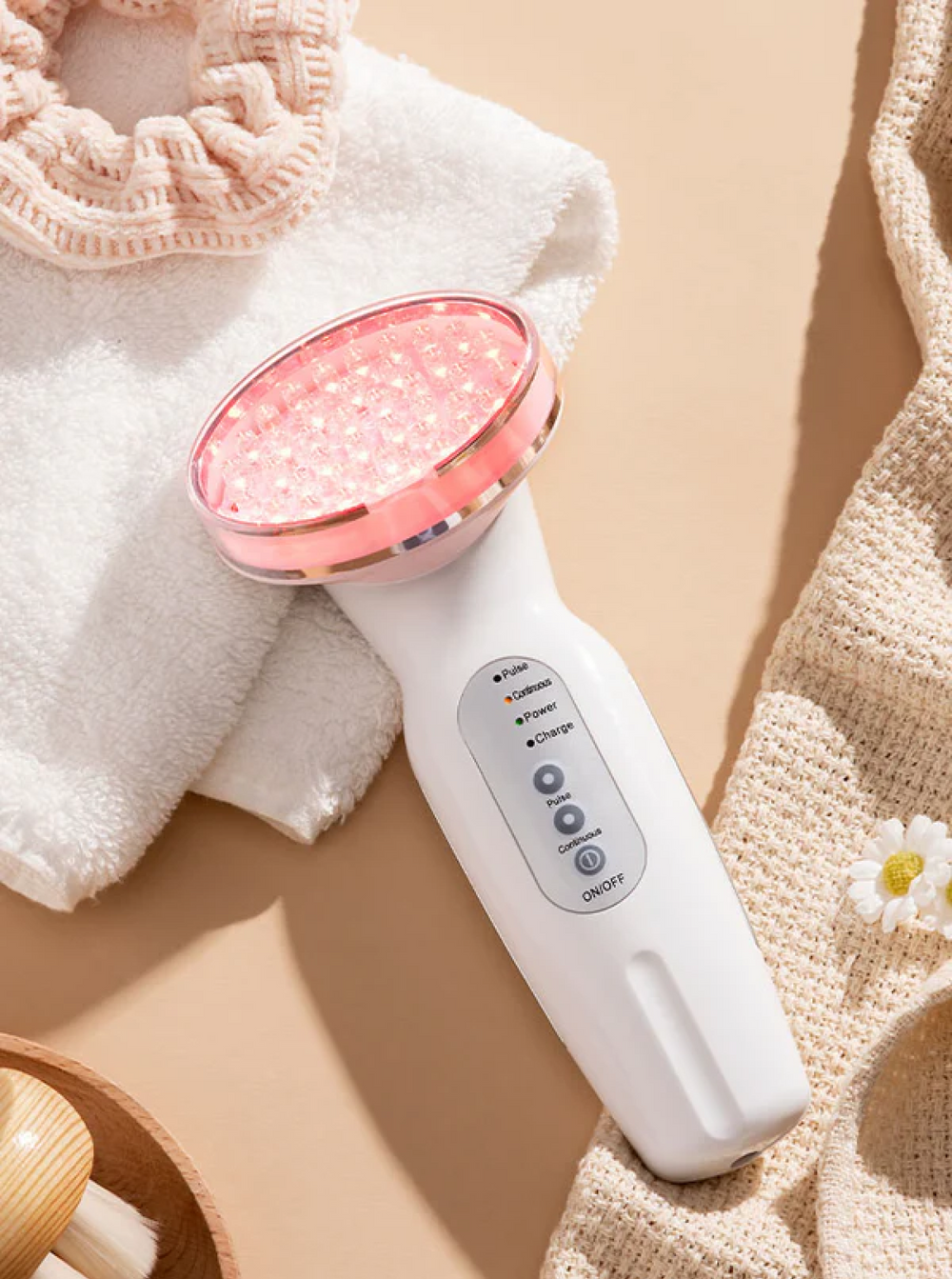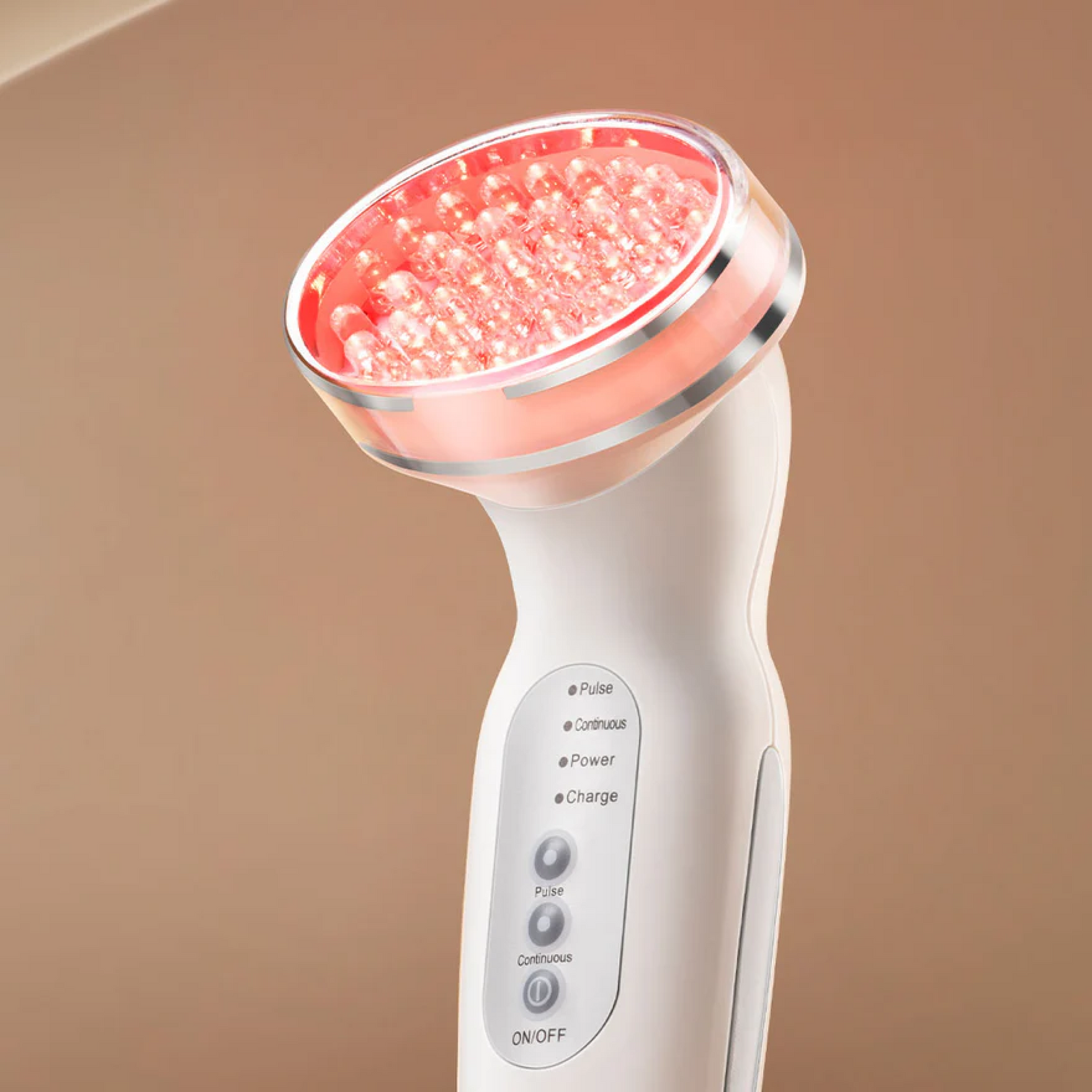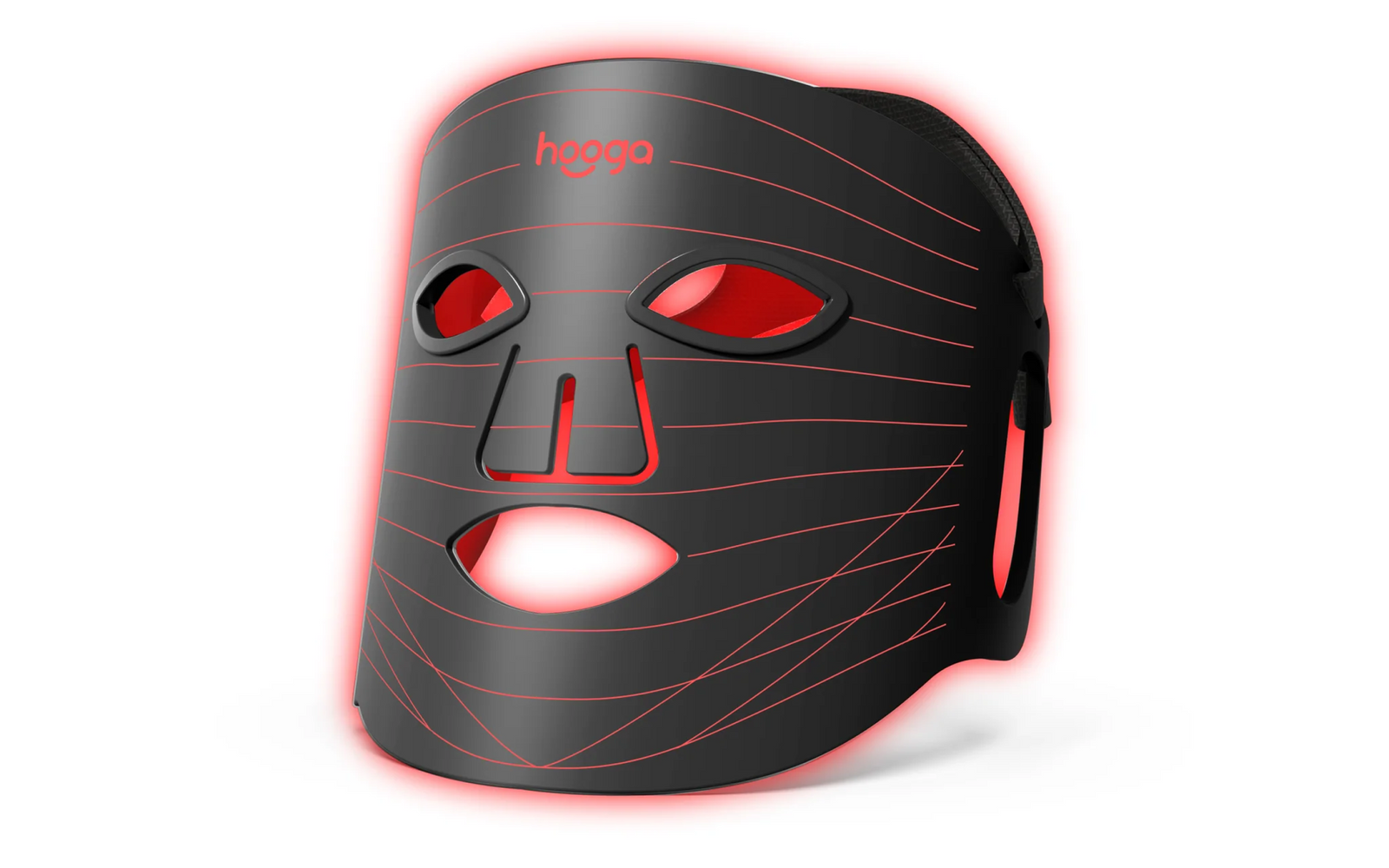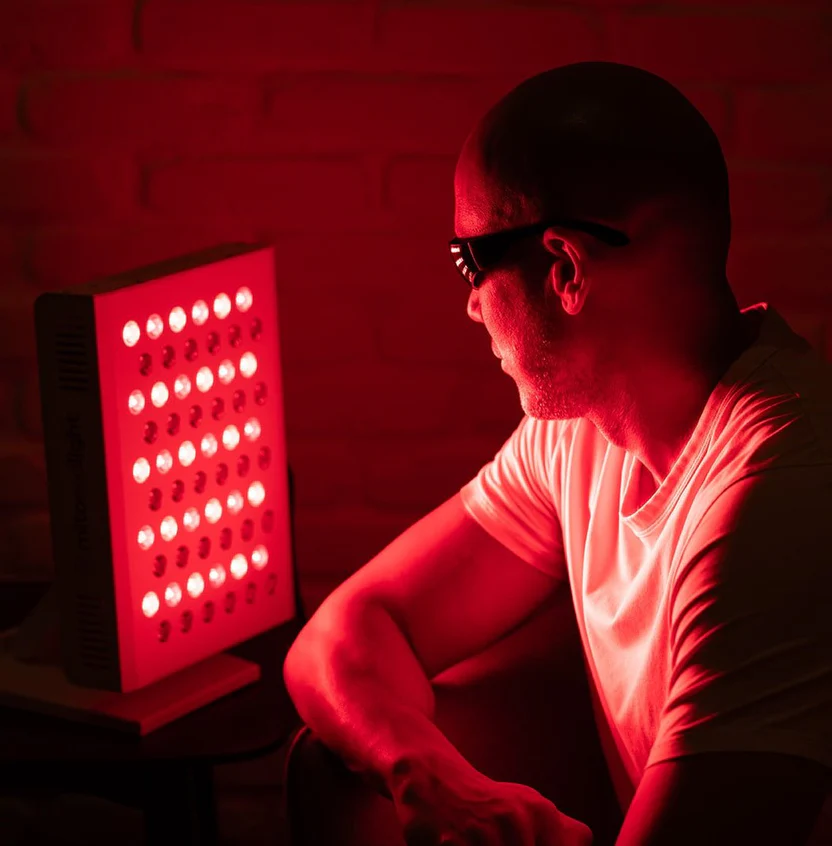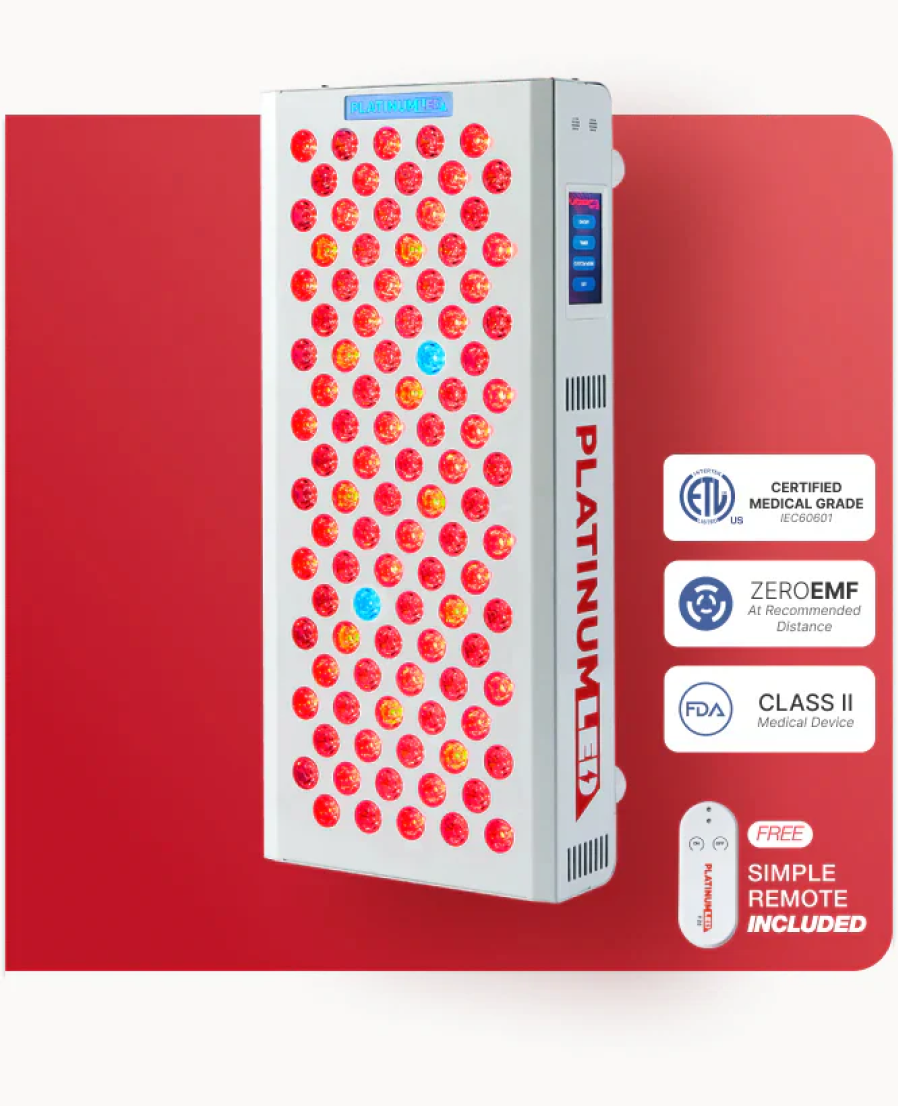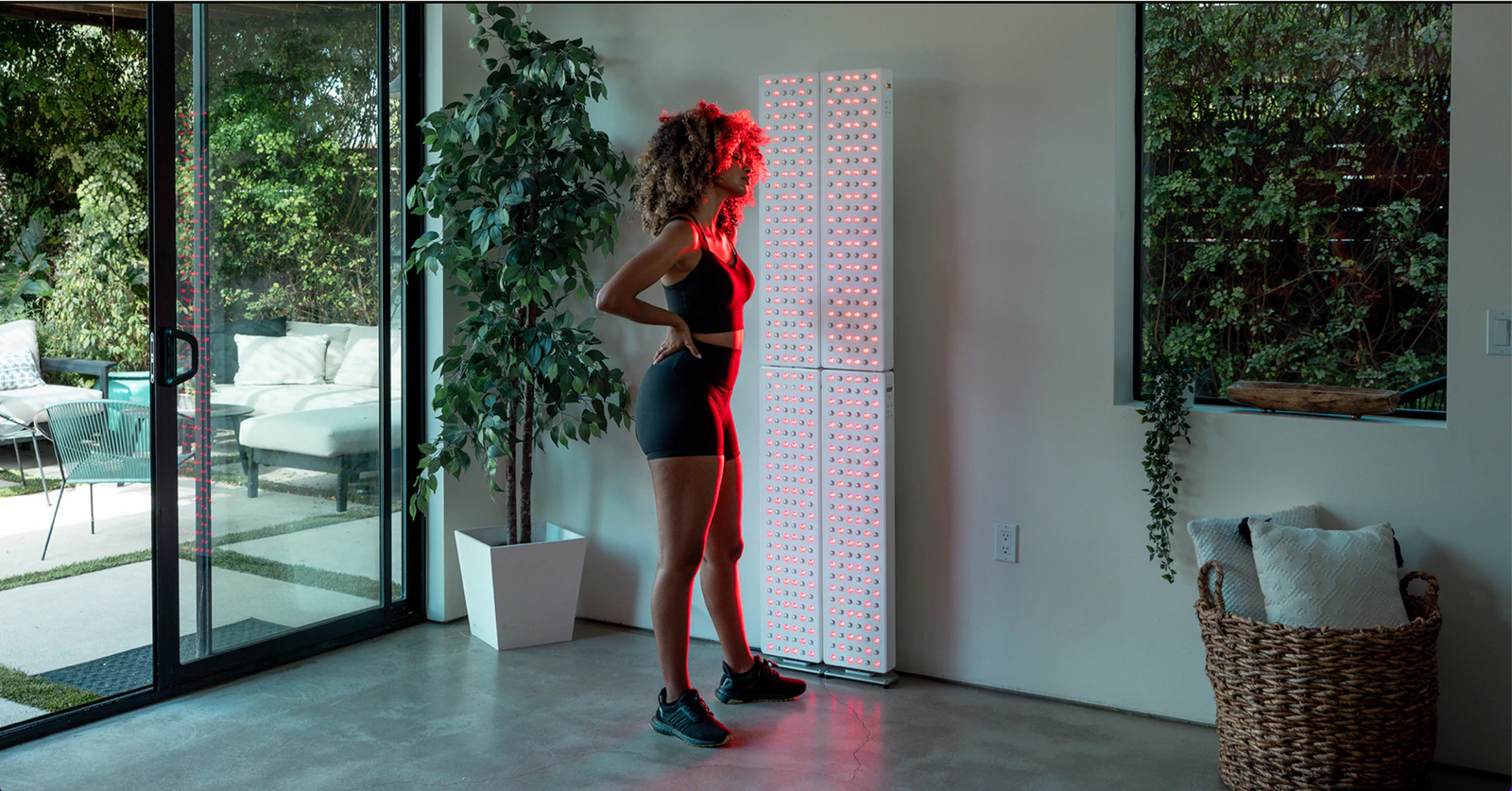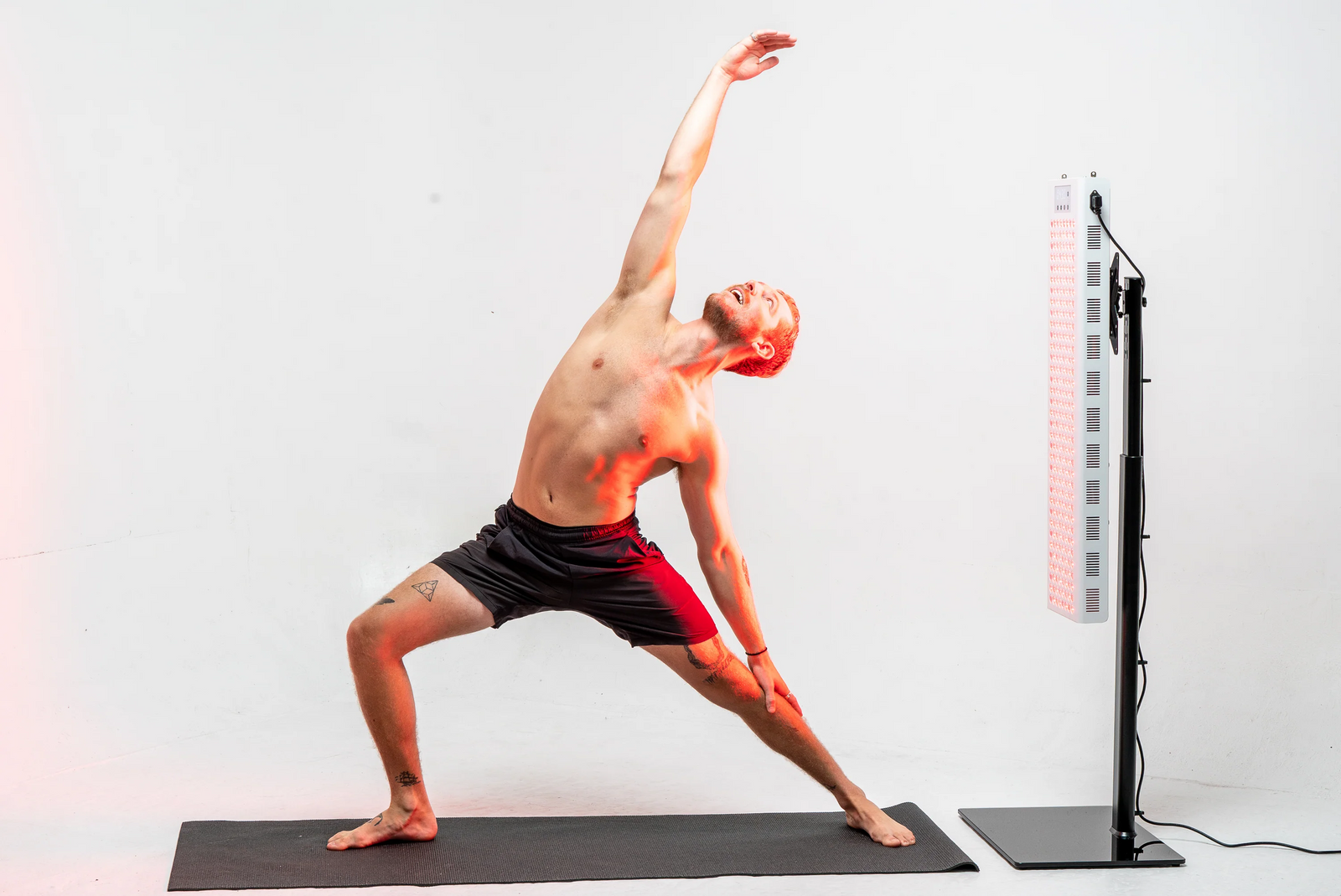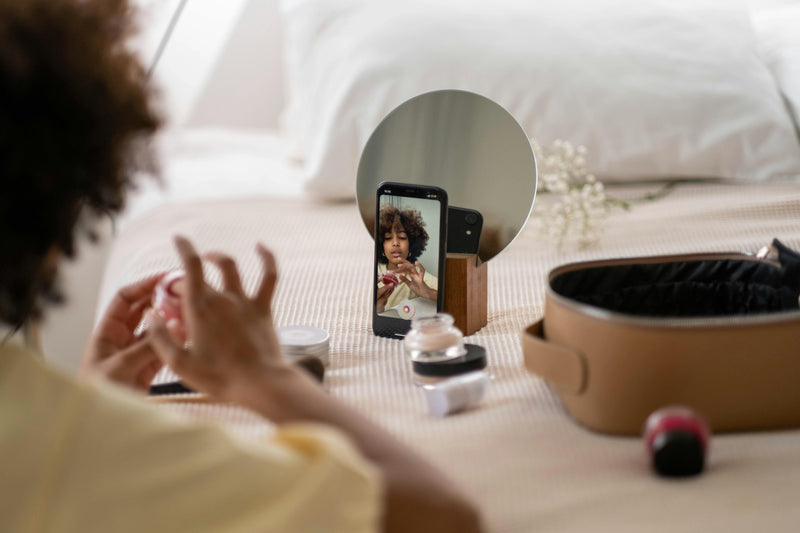Red light therapy (RLT) has become a cornerstone practice for biohackers aiming to optimize their health and longevity. This non-invasive therapy promises a range of benefits, from improved skin health to enhanced cellular function. In this comprehensive guide, we’ll break down everything a biohacker should know about red light therapy: how it works, its proven benefits, expert opinions, practical application, and what to look for when shopping for a device.
What Is Red Light Therapy?
Red light therapy involves the use of low-level wavelengths of red light to penetrate the skin and promote various biological functions. Biohackers often use it to stimulate energy production in cells, support tissue repair, reduce inflammation, and improve overall well-being.
RLT is delivered through specialized lamps, panels, or handheld devices that emit red and near-infrared (NIR) light in a range of 600-1000 nanometers. These wavelengths are absorbed by mitochondria, the energy powerhouses of the cell, boosting adenosine triphosphate (ATP) production, which is essential for cellular energy.
How Does Red Light Therapy Work?
When the skin absorbs red and near-infrared light, it penetrates deep into the cells, stimulating various biological processes. This light activates the mitochondria, improving their function and leading to an increase in ATP production. For biohackers, this means heightened energy levels at the cellular level, which can result in better recovery, cognitive function, and overall health.
Expert Insight: Dr. Rhonda Patrick on Red Light Therapy
Dr. Rhonda Patrick, a renowned expert in longevity and cellular health, highlights red light therapy's ability to enhance mitochondrial function. According to her, “Improving mitochondrial health through therapies like red light has far-reaching benefits for aging, cognitive function, and even athletic performance. By supporting the mitochondria, you support the body's ability to repair and recover.”
Cellular Benefits of Red Light Therapy
- Increased ATP Production: Red light promotes ATP synthesis in the mitochondria, enhancing cellular energy.
- Reduced Inflammation: Studies show that red light can reduce inflammation, which is key for recovery after workouts or injury.
- Improved Circulation: By stimulating blood flow, RLT helps deliver more oxygen and nutrients to tissues, speeding up healing processes.
- Collagen Production: Red light enhances collagen synthesis, making it popular for skin health, anti-aging, and wound healing.
- Neuroprotection: Some biohackers use red light therapy for brain health, as emerging research suggests it may support cognitive function and protect against neurodegenerative diseases.
Proven Benefits of Red Light Therapy
Biohackers value data-driven practices, and red light therapy has been studied extensively. Here are some key benefits supported by scientific research:
- Skin Health: Red light therapy is used for anti-aging, improving skin elasticity, reducing wrinkles, and treating acne and scars. Biohackers looking to boost collagen naturally find this therapy beneficial for maintaining youthful skin.
- Muscle Recovery and Performance: Athletes and fitness-focused biohackers can use RLT to speed up muscle recovery, reduce soreness, and improve performance by enhancing circulation and reducing oxidative stress in muscle tissue.
- Sleep Improvement: Regular use of red light therapy has been linked to better sleep quality. Biohackers interested in optimizing their circadian rhythm can incorporate RLT into their evening routine to promote relaxation and melatonin production.
- Pain Management: RLT has been shown to alleviate chronic pain conditions like arthritis, joint pain, and muscle stiffness by reducing inflammation and increasing circulation.
- Cognitive Function: Some research suggests red light therapy may improve cognitive performance and protect against neurodegenerative diseases like Alzheimer’s and Parkinson’s, making it a valuable tool for brain health.
Expert Insight: Dr. Andrew Huberman on Red Light Therapy for Brain Health
Dr. Andrew Huberman, a neuroscientist and professor at Stanford University, emphasizes the potential benefits of red light therapy for cognitive enhancement. "Red light therapy has shown promise in supporting brain health by improving blood flow and mitochondrial function in brain cells. This could be a game-changer for those looking to enhance cognitive performance and long-term brain health."
Understanding Red Light Therapy Wavelengths and Their Applications
One of the key factors in red light therapy is the wavelength of light used, as different wavelengths penetrate the body at varying depths and have different biological effects. For biohackers, knowing which wavelength to use is essential for targeting specific goals, whether it’s skin health, muscle recovery, or cognitive enhancement. Red light therapy typically utilizes wavelengths in the red and near-infrared (NIR) spectrum, ranging from 600 to 1000 nanometers (nm). Here’s a breakdown of the most common wavelengths and their applications:
1. Red Light (600-700 nm)
Wavelengths in the 600-700 nm range are classified as red light. These wavelengths penetrate the upper layers of the skin (about 2 to 3 millimeters), making them ideal for surface-level treatments.
- Applications:
- Skin Health: Red light at these wavelengths promotes collagen production, reduces wrinkles, and helps repair damaged skin. This is why biohackers looking to optimize their skincare routine or reverse signs of aging often focus on devices in this range.
- Wound Healing: The skin-penetrating effects of red light therapy make it excellent for accelerating wound healing and reducing scars, as it helps regenerate skin tissue.
- Inflammation Reduction: Red light therapy at these wavelengths can also reduce inflammation near the surface, making it useful for conditions like acne or skin irritations.
2. Near-Infrared Light (700-1000 nm)
Wavelengths in the near-infrared spectrum penetrate deeper into the body (up to 5 centimeters), reaching muscles, joints, and even the brain. Near-infrared light is invisible to the human eye but offers profound benefits for biohackers focused on deep tissue healing and cognitive performance.
- Applications:
- Muscle Recovery and Pain Relief: Near-infrared light’s ability to penetrate deep into tissues makes it ideal for muscle recovery, pain management, and reducing joint stiffness. Biohackers who engage in intense physical activity often use NIR therapy to accelerate recovery and minimize soreness after workouts.
- Cognitive Enhancement: NIR light can penetrate the skull and reach brain tissues, which is why it’s gaining attention for neuroprotection and cognitive enhancement. Emerging studies suggest that NIR light may improve memory, focus, and brain health by promoting mitochondrial function in brain cells.
- Reducing Inflammation in Deeper Tissues: Unlike red light, which focuses on surface-level inflammation, NIR light can reduce inflammation in deeper tissues, making it valuable for conditions like arthritis or chronic joint pain.
Expert Insight: Dr. David Sinclair on Red Light Therapy and Longevity
Dr. David Sinclair, a leading expert in aging and longevity, advocates for using therapies like red light to support cellular health. He notes, "Red light therapy may help to counteract some of the natural declines in cellular energy production that come with aging. By improving mitochondrial function, it’s possible to slow down some aspects of the aging process."
3. Dual-Wavelength Devices
Some advanced red light therapy devices offer dual-wavelength options, combining both red and near-infrared light for comprehensive treatment. These devices can treat both surface-level and deep tissue concerns simultaneously, making them versatile tools for biohackers looking for an all-in-one solution.
- Applications:
- Skin and Muscle Therapy: Dual-wavelength devices allow biohackers to target both skin health and muscle recovery in a single session, making them efficient for those with multiple health optimization goals.
- Complete Body Wellness: Combining the two wavelengths ensures that you get the benefits of both collagen production and deep tissue recovery, which can enhance overall well-being and performance.
Red Light Therapy at Home: Options at Various Price Points
Red light therapy has become increasingly accessible for biohackers looking to incorporate this practice into their daily routine. Whether you’re a beginner or a seasoned biohacker, there are home-use devices available at different price points, allowing you to reap the benefits of red light therapy in the comfort of your home. Below are some of the most popular options across various price ranges, so you can find the best device for your needs and budget.
1. Entry-Level Devices (Under $250)
For beginners or those wanting to test the waters with red light therapy, entry-level devices are affordable and easy to use. These are typically smaller, portable units that are perfect for targeting specific areas like the face, neck, or joints.
- Examples:
- Project E Red LED Anti-Ageing Therapy Wand: A portable, handheld device ideal for targeting small areas like acne spots or wrinkles. Affordable and beginner-friendly.
- Red Light Therapy Device by Hooga: A wearable mask designed for anti-aging and acne treatment, delivering red light directly to the face.
- Price Range: $130 - $250
- Best For: Beginners focusing on skin health, small areas of treatment, or those exploring the benefits of red light therapy before investing in a more expensive device.
2. Mid-Range Devices ($250 - $750)
Mid-range devices offer more versatility, power, and coverage than entry-level options. They are ideal for biohackers who want to treat larger areas of the body or need more powerful treatments for muscle recovery, pain relief, or sleep improvement.
- Examples:
- Mito Red Light Therapy Panel: This panel offers both red and near-infrared light, making it versatile for treating skin, muscles, and more. It’s a great choice for those looking to cover larger areas.
- PlatinumLED BIOMAX 300: A highly-rated mid-range panel that combines red and NIR light for both surface and deep tissue treatment.
- Price Range: $250 - $750
- Best For: Intermediate biohackers focused on muscle recovery, inflammation, and more comprehensive skin treatments. Also suitable for those looking to enhance sleep quality and overall energy levels.
3. High-End Devices ($750 and Up)
For serious biohackers and those who want to take red light therapy to the next level, high-end devices provide full-body treatment options with powerful light output. These devices typically have dual-wavelength capabilities (red and near-infrared light), allowing for both surface-level and deep-tissue benefits.
- Examples:
- Joovv Solo 3.0 Full-Body Red Light Therapy Panel: A popular choice among biohackers, this full-body panel offers both red and NIR light, perfect for optimizing overall health, recovery, and performance.
- RedRush 840 Pulse Full-Body Light Therapy Device: This device offers a high power output and a large treatment area, making it ideal for those who want comprehensive full-body treatments.
- Price Range: $750 - $1,500+
- Best For: Advanced biohackers, athletes, and those looking for full-body treatments, muscle recovery, brain health, and deeper tissue repair. High-end devices are perfect for users seeking powerful treatments for optimizing long-term health and performance.
Key Considerations When Purchasing a Home Device
When selecting a red light therapy device for home use, it’s important to consider several factors:
- Wavelength: Choose a device that offers red light (600-700 nm) for skin treatments or near-infrared light (700-1000 nm) for deeper tissues.
- Power Output: Look for devices with a power output of at least 20-200 mW/cm² for effective treatment. Higher power ensures shorter session times and deeper penetration.
- Size and Coverage: Decide whether you need a small, portable device for targeted areas or a full-body panel for more comprehensive treatments.
- Budget: Align your investment with your biohacking goals—affordable entry-level devices are great for beginners, while higher-end panels are more suitable for full-body treatments and long-term use.
Potential Side Effects and Precautions
Red light therapy is generally considered safe, but there are a few precautions to keep in mind. Avoid overexposure, as using the light for extended periods can cause skin irritation. It’s also important to protect the eyes during treatments by wearing appropriate eye protection, as prolonged exposure to bright light may lead to discomfort or damage.
Conclusion: Why Red Light Therapy Should Be in Every Biohacker’s Toolkit
For biohackers, red light therapy offers a non-invasive, scientifically-backed method to optimize various aspects of health, from skin and muscle recovery to brain function and sleep quality. Its growing body of research, combined with minimal risks and ease of use, makes it a must-try tool in the pursuit of longevity and optimal performance.
Whether you’re just beginning your biohacking journey or looking to level up your existing routine, red light therapy offers an accessible and effective way to support your body's natural healing and performance-enhancing processes.
